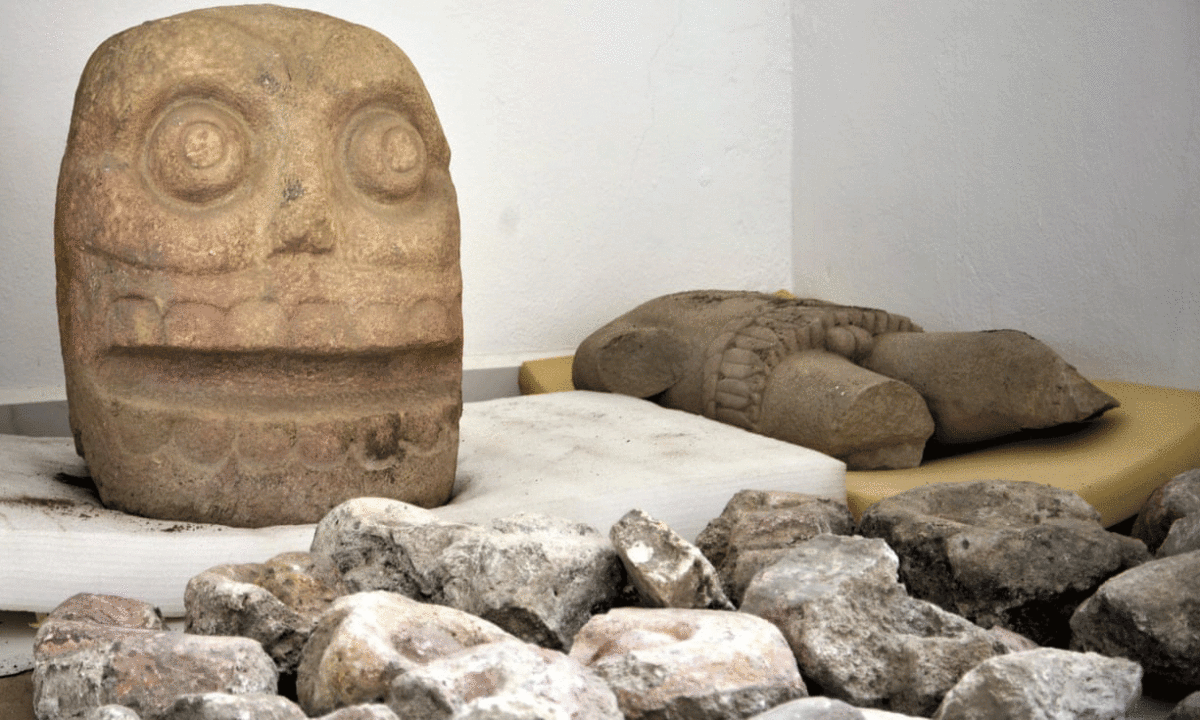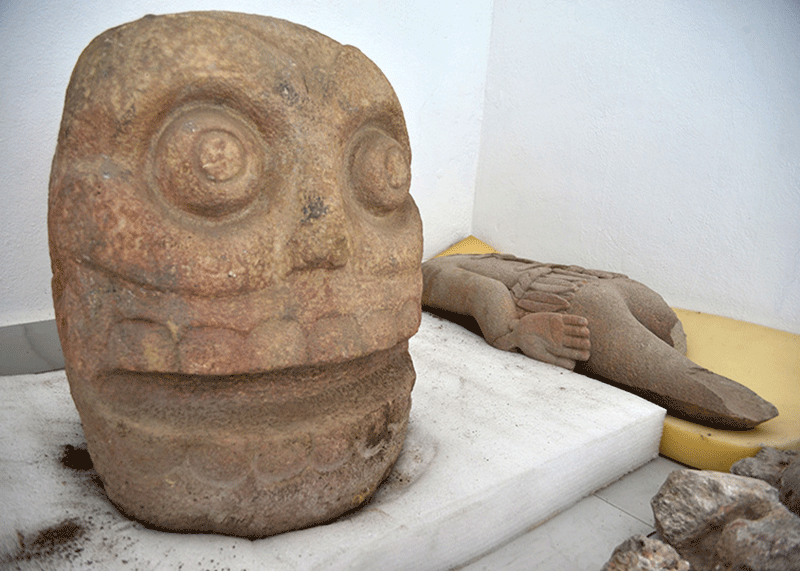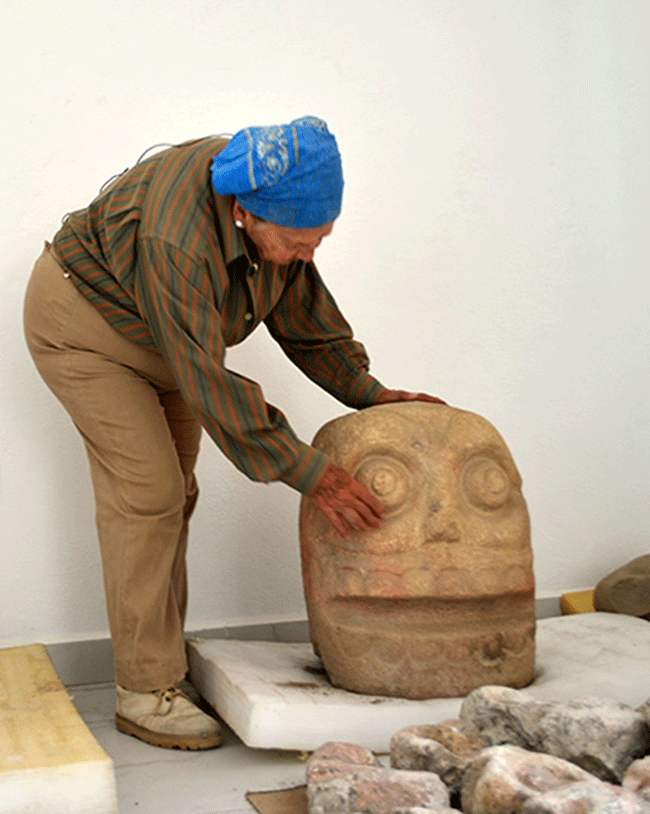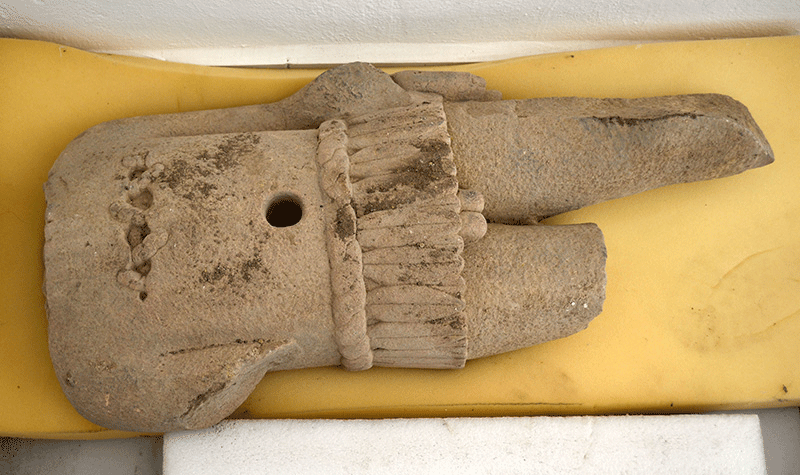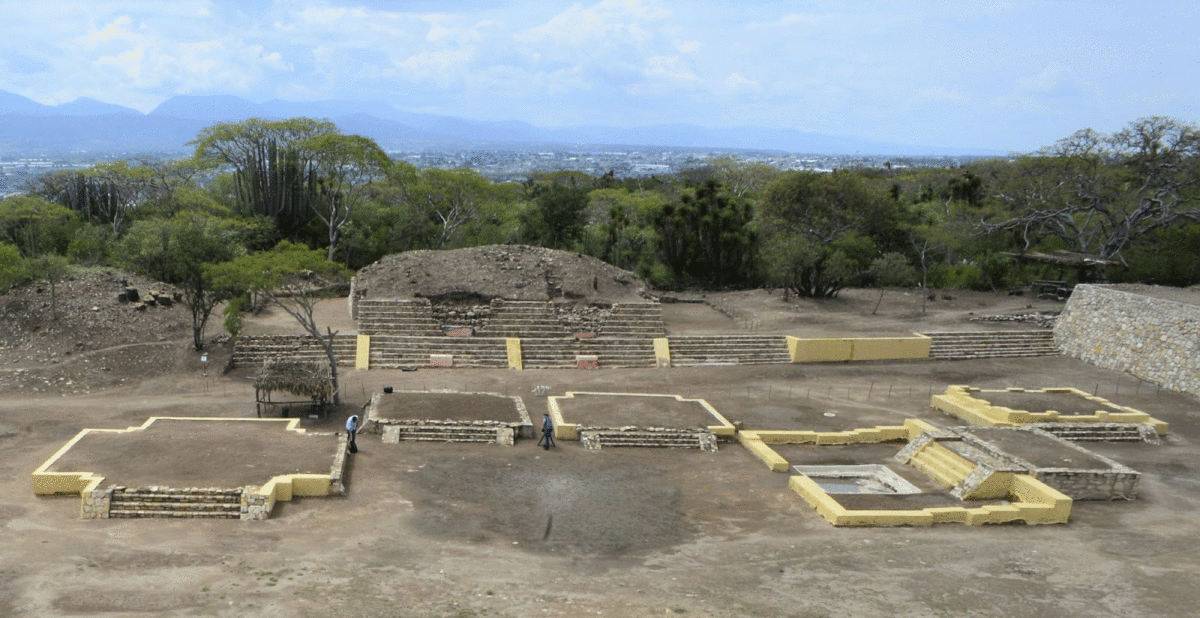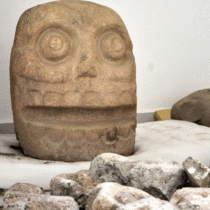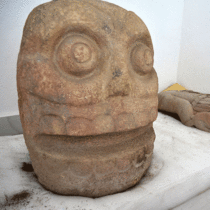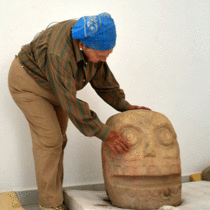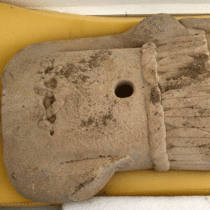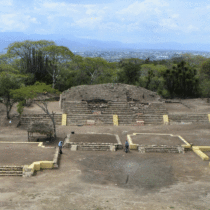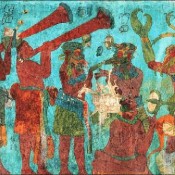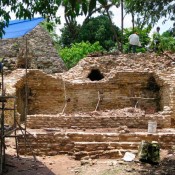A temple to the Xipe Totec, a pre-Hispanic fertility and war deity, has been discovered in Mexico. The temple is the first one dedicated to the deity, its name meaning the “Flayed God”, which was worshipped by numerous peoples across central and western Mexico and the Gulf coast.
The discovery was made during excavation works in the ruins of the Ndachjian-Tehuacan archaeological site in the country’s state of Puebla. The temple was built by the Popolocas and was probably used during the period of 1000-1260, before the Aztecs conquered the local people, and before the arrival of the conquistador Hernan Cortes.
Based on evidence researchers believe priests of the deity sacrificed and skinned their victims, usually captives, on two circular altars in the temple. Then they would drap themselves in their skin.
Among the items unearthed at the site are three stone sculptures of Xipe Totec, namely two skinned heads and a torso, its back engraved with representations of the sacrificial skins worn by the god. The torso is 80 cm tall and bears a hole in the belly; based on historical sources researchers believe a green stone would be placed in the hole to bring the statue to life for ceremonies. The skulls are about 70cm tall and weigh about 200kg. The torso had also an extra hand dangling off one arm, which further supports the idea that the god was wearing the skin of a sacrificial victim.
Xipe Totec was worshipped in a ceremony called Tlacaxipehualiztli, meaning “to wear the skin of the flayed one” in the indigenus Nahuatl language. The victims were initially killed with the use of various weapons and then skinned, their skins buried at the foot of the altars. Two holes on the ground filled with earth in front of the altars in Ndachjian-Tehuacan would probably serve this purpose.
The announcement was made by Mexico’s National Institute of Anthropology and History.
